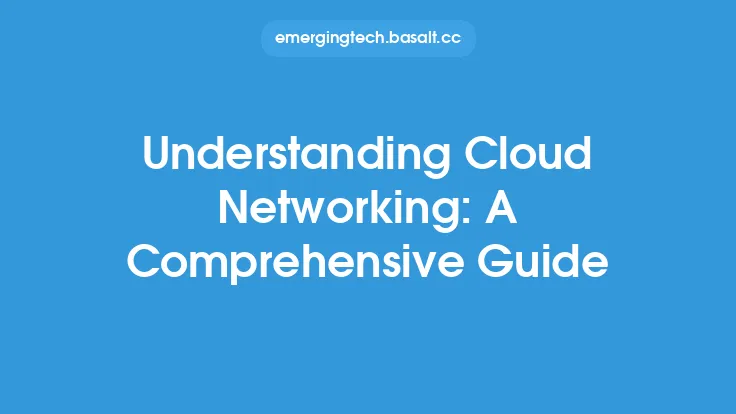Virtual reality (VR) is a computer-generated simulation of a three-dimensional environment that can be experienced and interacted with in a seemingly real or physical way. The concept of VR has been around for decades, but it has only recently become a mainstream technology with the advent of affordable and powerful hardware and software. In this article, we will delve into the world of VR, exploring its history, technology, and applications, as well as the key concepts and terminology that underpin this exciting and rapidly evolving field.
History of Virtual Reality
The idea of virtual reality has been around since the 1960s, when computer scientists and engineers first began experimenting with virtual environments. One of the earliest VR systems was the Head-Mounted Display (HMD) developed in 1968 by Ivan Sutherland, a computer scientist and engineer. This device used a headset with a display and sensors to track the user's head movements, providing a basic form of virtual reality. Over the years, VR technology has evolved significantly, with advancements in computer graphics, display technology, and sensor systems. In the 1990s, VR began to be used in various fields, including gaming, education, and healthcare, but it was not until the 2010s that VR started to gain mainstream attention with the release of consumer-grade VR headsets such as the Oculus Rift and the HTC Vive.
Key Concepts and Terminology
To understand virtual reality, it is essential to familiarize yourself with some key concepts and terminology. One of the most critical concepts in VR is immersion, which refers to the degree to which a user feels engaged and present in a virtual environment. Immersion is achieved through a combination of factors, including high-quality graphics, spatial audio, and realistic physics. Another important concept is latency, which refers to the delay between a user's actions and the response of the virtual environment. Low latency is crucial for a seamless and immersive VR experience. Other key terms include field of view (FOV), which refers to the extent of the virtual environment that a user can see, and frame rate, which refers to the number of frames per second (FPS) that are rendered to create the virtual environment.
Virtual Reality Hardware
Virtual reality hardware includes a range of devices and components that work together to create an immersive and interactive virtual environment. The most common VR hardware includes head-mounted displays (HMDs), which are worn on the head and provide a stereoscopic display of the virtual environment. HMDs can be further divided into two categories: tethered HMDs, which are connected to a computer or console, and standalone HMDs, which are self-contained and do not require a separate device. Other essential VR hardware includes controllers, which allow users to interact with the virtual environment, and sensors, which track the user's movements and provide feedback to the virtual environment. Advanced VR hardware may also include eye-tracking systems, which allow for more precise control and interaction with the virtual environment.
Virtual Reality Software
Virtual reality software is the backbone of the VR experience, providing the platform and tools for creating and interacting with virtual environments. VR software can be divided into several categories, including game engines, which provide a framework for building VR experiences, and content creation tools, which allow developers to create 3D models, textures, and other assets for VR environments. Other essential VR software includes rendering engines, which generate the graphics and visuals for the virtual environment, and physics engines, which simulate real-world physics and provide a more realistic and immersive experience. Popular VR software includes Unity and Unreal Engine, which are widely used for building VR games, experiences, and applications.
Applications of Virtual Reality
Virtual reality has a wide range of applications across various industries, including gaming, education, healthcare, and entertainment. In gaming, VR provides a new level of immersion and interactivity, allowing players to step into virtual worlds and experience games in a more engaging and realistic way. In education, VR is used to create interactive and immersive learning experiences, such as virtual field trips and simulations, which can enhance student engagement and understanding. In healthcare, VR is used for therapy, treatment, and training, providing a safe and controlled environment for patients and medical professionals to practice and learn. Other applications of VR include architecture, engineering, and product design, where VR is used to create interactive and immersive models of buildings, products, and systems.
Challenges and Limitations
Despite the many advances and applications of virtual reality, there are still several challenges and limitations that need to be addressed. One of the main challenges is cost, as high-end VR hardware and software can be expensive and inaccessible to many users. Another challenge is content availability, as there is still a limited range of high-quality VR content available, particularly in areas such as education and healthcare. Other limitations include technical issues such as latency, resolution, and field of view, which can affect the overall quality and immersion of the VR experience. Additionally, there are also concerns about the potential health and social impacts of VR, such as eye strain, headaches, and social isolation, which need to be carefully considered and addressed.
Conclusion
Virtual reality is a rapidly evolving and exciting field that has the potential to transform a wide range of industries and applications. From its early beginnings to the current state of the art, VR has come a long way, with significant advances in hardware, software, and content. As VR technology continues to improve and become more accessible, we can expect to see even more innovative and immersive applications in the future. Whether you are a gamer, educator, healthcare professional, or simply someone interested in technology, virtual reality is an area that is definitely worth exploring and learning more about. With its potential to revolutionize the way we interact, learn, and experience the world, virtual reality is an exciting and rapidly evolving field that is sure to have a significant impact on our lives in the years to come.





